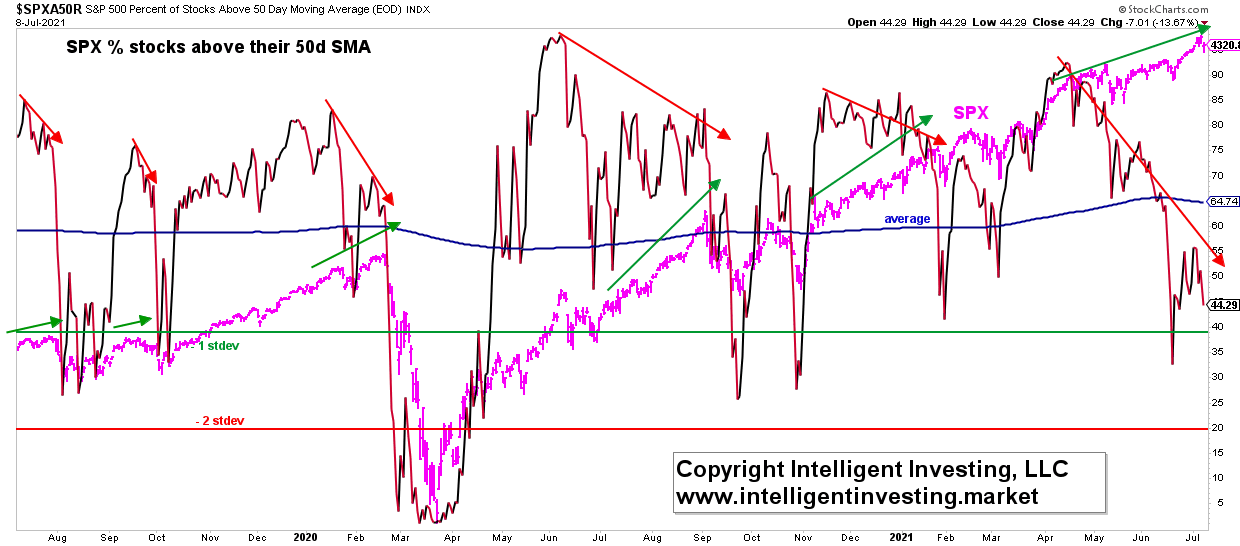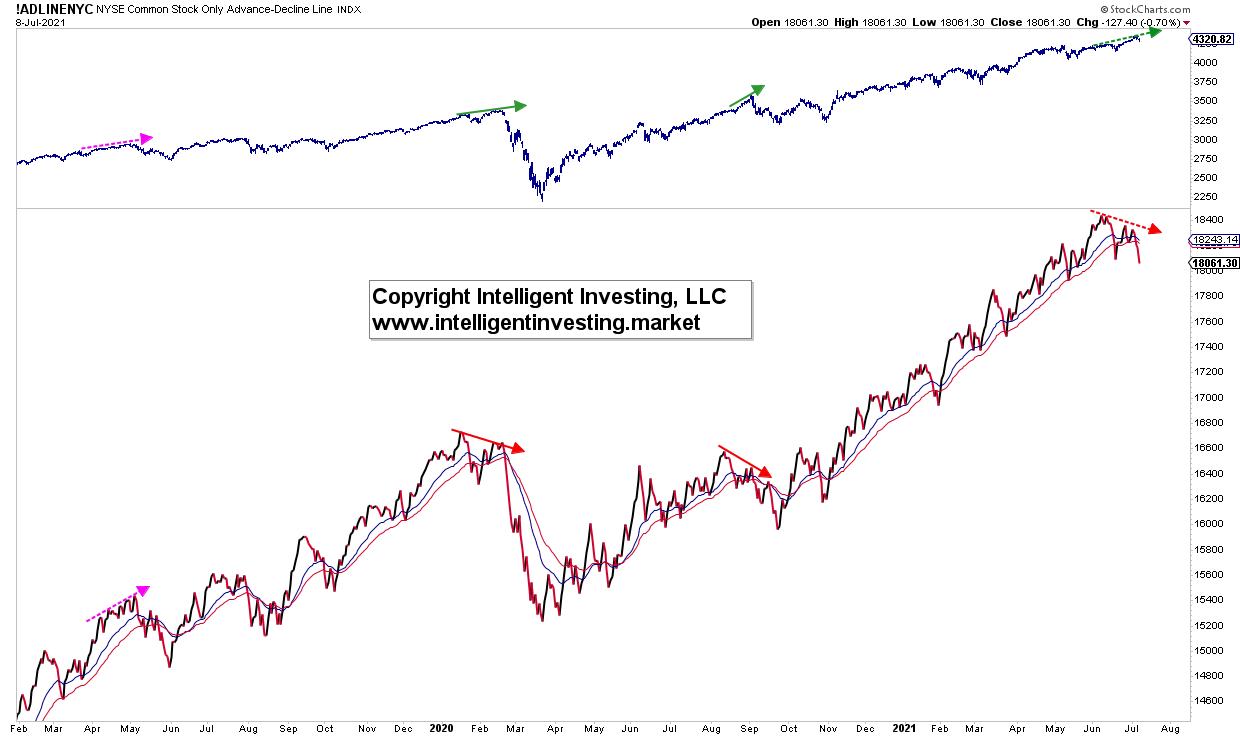Haliwhat? Halitosis: an oral health problem where the main symptom is bad (smelling) breath.
Since the stock market is an index made up of individual stocks (about 500 for the S&P 500 and 30 for the Dow Jones Industrial Average), Halitosis means fewer and fewer stocks in each index are participating in the rally.
This often happens in the latter stages of a rally. This rally is then easily susceptible to selling pressure. The last stages of a rally are in Elliott Wave Principle (EWP) terms called 5th waves. Thus, let us have a look at some market breadth indicators. Please note that lousy breadth, aka negatively diverging breadth, can help foretell a pending correction, but it does not tell us how significant that correction will be.
Figure 1: Percent of stocks in the S&P 500 above their respective 50-day Simple Moving Average

The number of stocks in the S&P 500 trading above their own 50-day SMA has steadily declined since late March, while the index kept rising. Only 44% of all the 500 individual stocks in the S&P 500 are trading above their 50-d SMA, while the index hit a new all-time high yesterday. One of the most significant divergences over the last two years. The chart shows the varying decrease of correction that followed: anywhere from 5% to 35%.
Figure 2: NYSE Common Stock Only Cumulative Advancing/Declining line

The Cumulative Advancing/Declining (A/D) Line can also help assess if a correction is pending by showing negative divergence. See Figure 2 above.
Starting on the left-hand side of the chart (pink dotted arrows), negative divergence is not even needed to usher in a 10-20% correction. Then, in February 2020 (solid red arrow), the 35% COVDI-19 crash was foretold. Similarly, for the September 2020 correction, which was “only” 11% (second solid red arrow). Currently, the A/D line is negatively diverging once again (red dotted arrows on the right-hand side of the chart) and, thus, a 10-35% correction should be expected.
Figure 3: Bullish Percent Index Charts for S&P 500 and NASDAQ

Thirdly, the Bullish Percent Index (BPI) measures how many individual stocks in an index are on a Point & Figure Buy Signal (Source: here). Also, now it follows fewer and fewer individual stocks in both the S&P 500 and the NASDAQ Composite were on a “buy,” while both indexes moved higher. The arrows in both charts show prior similar diverging instances, how long they can take, and what effect they ultimately had on the underlying indexes. Corrections varied from anywhere between 5-35%.
Figure 4: Summation Indexes for the S&P 500 and NASDAQ 100

Lastly, the McClellan Summation Indexes (SIs) for the S&P 500 and Nasdaq 100. SI’s add daily McClellan Oscillator (MO) readings to the previous day. Source: here.
Negative MOs mean there were more declining than advancing stocks that day, causing the SI to decrease, whereas positive MOs mean the reverse. Thus, since May, the S&P 500 has mostly seen negative MOs and a declining SI, while the NDX mostly had positive MOs and a rising SI. Talk about bifurcation and not making the life of a market analyst any easier. This shows that the market-cap-weighted indexes like these two were pushed higher by technology-related stocks and predominantly a select group of mega-cap stocks like Facebook Inc (NASDAQ:FB), Apple Inc (NASDAQ:AAPL), Amazon.com Inc (NASDAQ:AMZN) and Alphabet (NASDAQ:GOOGL).
Although there are many more market breadth indicators, I do not want to succumb to “analyses paralyzes.” These select indicators all show that several indexes indeed suffer from Halitosis, which always lead to a correction further down the road. The question now is: “How much of a correction will we get?”
Given my preferred EWP count (see my recent article here), I don’t expect a 35% correction, but anything in between 5% and 10% will suffice to reset the clock before the next rally can start.
